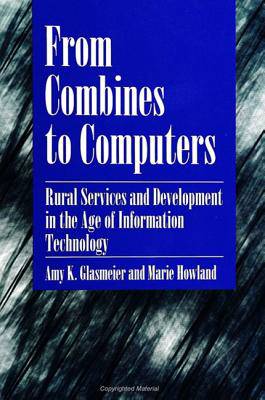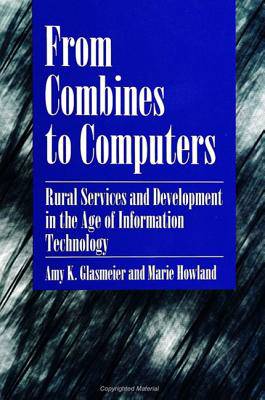
- Afhalen na 1 uur in een winkel met voorraad
- Gratis thuislevering in België vanaf € 30
- Ruim aanbod met 7 miljoen producten
- Afhalen na 1 uur in een winkel met voorraad
- Gratis thuislevering in België vanaf € 30
- Ruim aanbod met 7 miljoen producten
Zoeken
From Combines to Computers
Rural Services and Development in the Age of Information Technology
Amy K Glasmeier, Marie Howland
€ 145,45
+ 290 punten
Uitvoering
Omschrijving
Through an analysis of national data and detailed case studies, From Combines to Computers examines how the transition to a service economy is playing out for rural America. It answers two important questions: Will services fill the gap left by lost farming, manufacturing, and mining jobs? And will services stabilize, even revitalize, rural areas? Glasmeier and Howland document the intraregional spatial patterns and trends of services in the national economy, compare services in urban and rural communities, and identify the potential and limitations of rural development strategies based on services. In particular, they document the growing dominance of branch plants, the displacement of "mom-and-pop" enterprises, and the declining access to services for residents in the least populated rural areas. The authors conclude that services are unlikely to be the basis of widespread sustainable development unless policies are designed to help firms and communities compete successfully in an increasingly global and information-based economy
Specificaties
Betrokkenen
- Auteur(s):
- Uitgeverij:
Inhoud
- Aantal bladzijden:
- 291
- Taal:
- Engels
- Reeks:
Eigenschappen
- Productcode (EAN):
- 9780791421994
- Verschijningsdatum:
- 22/11/1994
- Uitvoering:
- Hardcover
- Formaat:
- Genaaid
- Gewicht:
- 580 g

Alleen bij Standaard Boekhandel
+ 290 punten op je klantenkaart van Standaard Boekhandel
Beoordelingen
We publiceren alleen reviews die voldoen aan de voorwaarden voor reviews. Bekijk onze voorwaarden voor reviews.











